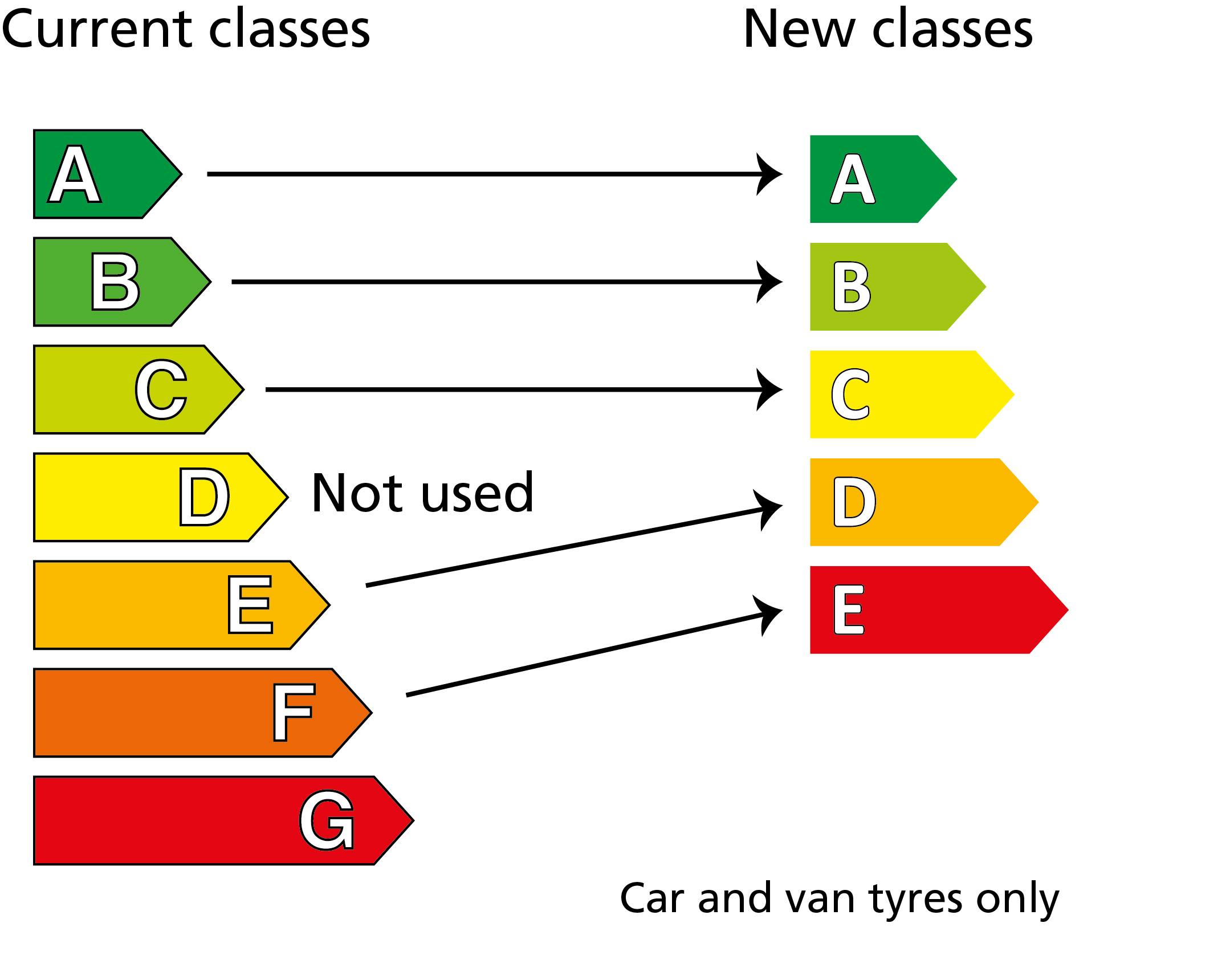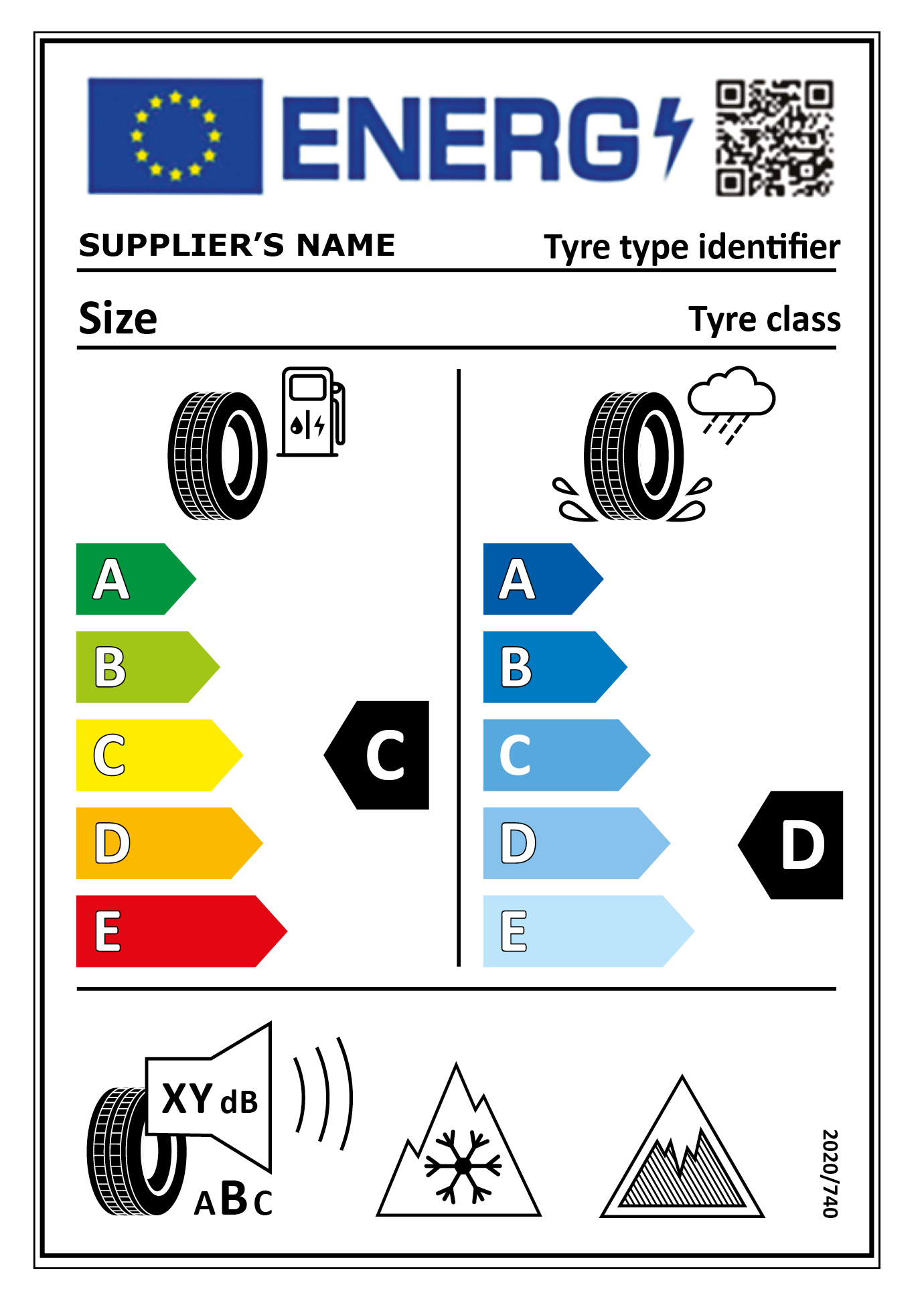Tyres significantly influence vehicle ride, handling, noise, fuel consumption, emissions and braking distance. The tyres originally fitted to your vehicle were carefully tailored to it by the vehicle and tyre manufacturers to optimise performance and driving experience.
Tyres aren’t just black and round. As you consider replacing your tyres it’s worth understanding how to make the best choice so as to avoid disappointment or dissatisfaction.
Original equipment tyres are carefully matched to the vehicle by the tyre and vehicle manufacturers. Vehicle performance and comfort will be altered if replacement tyres are not of a similar specification.
Special care should also be taken with four-wheel drive vehicles where some vehicle manufacturers specify a maximum tread depth difference between axles. Consult the vehicle handbook.
A bewildering choice of replacement tyres is available. Here’s how to navigate through the jungle:
- Correct size: Fitting a different size tyre than the original equipment could significantly alter the vehicle’s handling and or cause fouling with bodywork, etc.
- Correct load Index: the replacement tyre must have the same or greater load index than the original equipment. This is a legal requirement.
- Correct speed symbol: Although in the UK the law only requires that tyres are capable of meeting the national speed limit, do not be tempted to fit a lower Speed Symbol tyre than originally fitted. The Speed Symbol is not only an indicator to the tyre’s maximum speed capability, but also an indicator of how well it copes under braking, cornering and acceleration. In most other European countries, the speed symbol of replacement tyres must by law be at least equal to the original equipment tyres.
- Optimum performance: Numerous parameters are required to characterise the performance of a tyre but three of them are provided on the tyre label: Wet grip (safety), Rolling resistance (fuel economy and CO2 emissions) and external noise. You can find out more about the tyre label information here.
For certain high-performance cars, matching sets of vehicle manufacturer approved tyres are recommended to maintain the handling characteristics of the vehicle. Consult the vehicle handbook for this information.
It is not recommended to mix tyres of different categories on a vehicle, e.g. summer tyres, winter tyres, “run flat” tyres, on/off road tyres, etc and never across an axle. Furthermore, tyres with significantly different states of wear should not be mixed across an axle.
New tyre labelling regulations came into force on 1 May 2021
We are becoming increasingly aware of the impact of our lifestyle choices on road safety and the environment. Tyres make a vital contribution to mobility. Fitting the right tyres and maintaining them correctly will improve your safety on the road and reduce your contribution to CO2 emissions.
A wide range of replacement tyres is available. The labelling information exists to inform your choice. You will find it on websites and on the tyre label. Your retailer should also provide the information before you chose your tyres.
Least cost may not represent best value: investing more may pay off in improved fuel economy and additional performance as well as reduced CO2 emissions. Taking account of your needs and the labelling information, your retailer can advise you of the most suitable purchase that balances cost, safety and environmental performance.
A-rated tyres can pull you up a quarter shorter in the wet and save you 1 litre of fuel in every 16 compared to the lowest grade. (For a full set of tyres fitted to an average car).
A new EU tyre label was introduced on 1st May 2021 adopting a simplified system of label classes:

Tyres with the new label will progressively replace existing stocks showing the old label.
New label

Old label

The new label also has provision to show the 3 peak mountain snowflake Alpine symbol, indicating tyres that meet an objective performance standard contributing to improved winter mobility. Tyres with the Alpine symbol marking are increasingly the choice of professionals who recognise the value of reliable winter mobility including the emergency services, utility companies and supermarket home deliveries.
The new EU regulation has force of law in N Ireland. Equivalent regulations in Great Britain are planned to follow. The Department for Transport has welcomed the industry commitment to maintain consistent communication of the tyre labelling information throughout the transition to the new regulation.
Due to their greater tread depth, new tyres will generally have better grip than the remaining tyres on the vehicle, especially in the wet. This grip differential can lead to vehicle instability under sudden manoeuvres, such as when swerving and braking to avoid a collision. Electronic stability programs reduce this risk but in general it is best to fit new tyres in pairs and to the rear axle. However, where the vehicle manufacturer gives different advice you should follow it.
Replacement of self-supporting “run-flat” tyres
It is recommended to replace self-supporting tyres (SSTs) with similar tyres thereby retaining the run-flat capability. Fitting standard radial tyres to vehicles originally equipped with SSTs will remove the vehicle’s run flat capability, potentially leaving the driver immobile in the case of a deflation, and could compromise vehicle handling. It is recommended to consult with the vehicle manufacturer or tyre manufacturer before replacing SSTs with standard tyres.
Mixing self-supporting “run-flat” tyres with standard tyres
The handling and performance characteristics of SSTs are different to those of standard radial tyres, and so they should not be intermixed on a vehicle, i.e. all four tyres should be similar in structure. It is recommended that the same make and type of SST tyre is fitted across the axle. In most other European countries, it is not allowed to mix different brands or structures of tyres on the same axle.
Use of Self-supporting “run-flat” tyres on caravans and trailers
SSTs must only be fitted to vehicles which have a Tyre Pressure Monitoring System (TPMS) as a visual / audible warning to drivers of a deflating tyre. As yet no caravans or trailers are equipped with TPMS systems and hence should not be fitted with SSTs.
Despite tight manufacturing tolerances, tyres and wheel rims can exhibit imbalance characteristics. These effects can be cumulative when the tyre, valve and rim are assembled. Balancing the wheel assembly assures best performance and comfort, maximising road safety and tyre life.
Conversion guidelines require that, whether using existing or larger diameter wheels, the replacement tyre rolling dimensions, load capacity and speed rating must match those of the manufacturer approved tyres for the vehicle. It is advisable to check with the vehicle or tyre manufacturer that the intended replacement tyre is dimensionally possible and an appropriate fit on the vehicle. Failure to do so can adversely affect gear ratios, ride height, speedometer reading, ABS, traction control and tyre pressure monitoring systems. It is also equally important the tyre and wheel size are compatible.
When changing tyre size from the original fit, it is recommended the vehicle’s insurers are advised and their agreement obtained, otherwise insurance may be invalidated. Fitting inappropriate tyres will affect the vehicle’s handling, potentially compromise safety and may render the vehicle illegal.
In order to deliver their intended performance tyres must be fitted to a rim of appropriate width. There is a growing fashion to customise cars by stretching the tyres over excessively wide rims. See illustration below. Such fitment causes excessive distortion of the tyre sidewall and could lead to premature tyre failure. There is also a serious risk of the tyre being dislodged from the wheel rim under sudden cornering forces.
Vehicle manufacturers’ original wheel and tyre equipment complies with the recommended fitments set out in BS ISO 4001: 2007. These data are also available in the relevant section of the standards manual published by the European Tyre and Rim Technical Organisation (ETRTO), available here.
Aftermarket fitments that do not respect these recommendations may invalidate motor insurance and may contravene the Road Vehicles Construction & Use Regulation 27 (tyre not maintained in such condition as to be fit for the use to which the vehicle is being put), Regulation 63 (bodywork and spray suppression) and the Road Traffic Act section 40 (vehicle in dangerous condition).
Recommended rim widths calculated in accordance with BS ISO 4001: 2007 for the most popular tyre sizes are set out in the table below.
| Tyre size | Minimum rim width | Optimum rim width | Maximum rim width |
| 205/55R16 | 5.5” | 6.5” | 7.5” |
| 225/40R18 | 7.5” | 8.0” | 9.0” |
| 225/45R17 | 7.0” | 7.5” | 8.5” |
| 195/65R15 | 5.5” | 6.0” | 7.0” |
Motorists are urged to consult the relevant tyre manufacturer before changing tyre or wheel sizes to ensure compatibility of the two components for the vehicle application.


